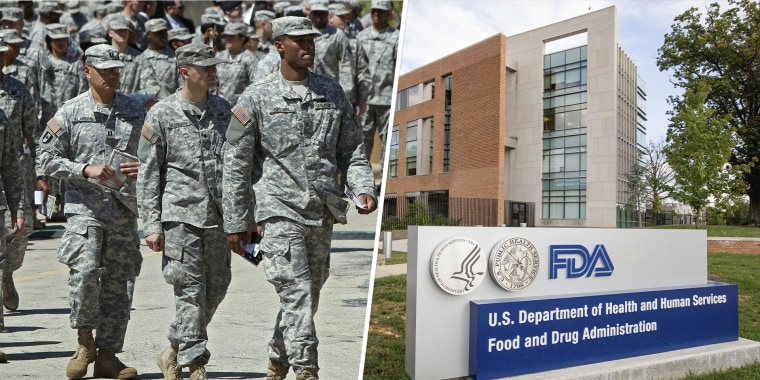Report on the Cincinnati Downtown Ambassador Program and its Contribution to Sustainable Development Goals
Introduction
The Cincinnati Center City Development Corp (3CDC) manages the Downtown Ambassador program, an initiative designed to enhance urban safety, cleanliness, and public well-being in downtown Cincinnati. This report analyzes the program’s functions and its significant contributions to achieving key United Nations Sustainable Development Goals (SDGs), particularly SDG 11 (Sustainable Cities and Communities), SDG 8 (Decent Work and Economic Growth), and SDG 16 (Peace, Justice and Strong Institutions).
Alignment with SDG 11: Sustainable Cities and Communities
The Ambassador program’s core mission is to make the urban center more safe, inclusive, and resilient, directly supporting the objectives of SDG 11.
Key Services for Urban Sustainability
The program, which employs over 80 ambassadors, provides a range of services critical for maintaining a sustainable urban environment. These services include:
- Environmental Maintenance: Proactive litter removal and graffiti cleanup to ensure clean and accessible public spaces (Target 11.7).
- Public Assistance: Offering directions and general assistance to residents and visitors, fostering an inclusive and welcoming city atmosphere.
- Safety and Security: Providing safety escorts to vehicles or offices and maintaining a visible presence to deter crime.
Addressing Urban Safety Challenges
In response to areas identified by the Cincinnati Police Department as crime hotspots, including Downtown and Over-the-Rhine (OTR), the program serves as a crucial component of the city’s public safety infrastructure. By providing a constant presence and acting as a liaison to law enforcement, the ambassadors contribute to making the city’s public spaces safer for all citizens (Target 11.2 and 11.7).
Contributions to SDG 8 and SDG 16
The program extends its impact beyond urban maintenance, contributing to local economic stability and the development of strong institutional partnerships.
SDG 8: Decent Work and Economic Growth
The Ambassador program is a source of stable employment and contributes to the local economy. Key points include:
- Job Creation: The program provides employment for a team of over 80 individuals, including veteran staff who have served for over 15 years.
- Responsive Staffing: 3CDC has implemented a 22% increase in staffing to address seasonal challenges such as a summer crime spike, demonstrating a commitment to creating and sustaining decent work opportunities.
SDG 16: Peace, Justice and Strong Institutions
A foundational element of the program is its collaborative model, which strengthens local institutions responsible for peace and justice.
- Institutional Partnership: Ambassadors are equipped with police radios, enabling direct communication with the Cincinnati Police Department (CPD). This partnership ensures that security incidents beyond the ambassadors’ scope are handled efficiently by the appropriate authorities.
- Community-Based Safety: By serving as non-police “eyes and ears,” the ambassadors help build a more inclusive and effective public safety model, fostering trust and strengthening the relationship between the community and law enforcement institutions.
Operational Strategy and Conclusion
The strategic deployment of ambassadors across a wide geographic area, from Findlay Market to The Banks, ensures comprehensive coverage and high visibility. The dedication of program staff underscores the initiative’s role in fostering a sense of community and shared responsibility for urban well-being.
In conclusion, the 3CDC Downtown Ambassador program is a multifaceted initiative that effectively addresses critical urban challenges while aligning with global sustainability targets. It enhances the physical environment, promotes public safety, creates economic opportunities, and strengthens institutional partnerships, making it a vital asset in Cincinnati’s pursuit of becoming a more sustainable, safe, and prosperous city.
Program Contact Information
For safety escorts or public assistance, the Ambassador Hotline is available at (513) 623-3429.
Analysis of SDGs, Targets, and Indicators
1. Which SDGs are addressed or connected to the issues highlighted in the article?
- SDG 8: Decent Work and Economic Growth – The article highlights the creation of jobs through the Downtown Ambassadors program.
- SDG 11: Sustainable Cities and Communities – The program’s core mission is to make the city’s downtown area cleaner, safer, and more inclusive for residents and visitors.
- SDG 16: Peace, Justice and Strong Institutions – The ambassadors’ role in crime prevention and safety contributes to building a more peaceful and secure community.
2. What specific targets under those SDGs can be identified based on the article’s content?
-
SDG 8: Decent Work and Economic Growth
- Target 8.5: Achieve full and productive employment and decent work for all. The article states that the Cincinnati Center City Development Corps (3CDC) employs “more than 80 other workers” as ambassadors and is “always looking for more ambassadors to join their team,” directly addressing the creation of employment opportunities.
-
SDG 11: Sustainable Cities and Communities
- Target 11.6: Reduce the adverse per capita environmental impact of cities, including by paying special attention to … municipal and other waste management. The ambassadors’ duties explicitly include “litter pickup, graffiti cleanup,” which are direct actions related to municipal waste management and maintaining the environmental quality of the city.
- Target 11.7: Provide universal access to safe, inclusive and accessible, green and public spaces. The program works to “keep the city streets clean and people safe.” Services like providing “safety escorts” to a car or office and having a visible presence on “every street corner” are aimed at ensuring public spaces are safe and accessible for everyone.
-
SDG 16: Peace, Justice and Strong Institutions
- Target 16.1: Significantly reduce all forms of violence and related death rates everywhere. The article notes that ambassadors work in “hot spot areas for crime” and help address a “summer crime spike.” By acting as “another set of eyes and ears in the community” and having “police radios” to report incidents, they contribute to crime prevention and the overall reduction of violence and feelings of insecurity.
3. Are there any indicators mentioned or implied in the article that can be used to measure progress towards the identified targets?
-
For Target 8.5 (Decent Work and Economic Growth):
- Number of people employed: The article explicitly states the program employs “more than 80 other workers.”
- Rate of job creation/staffing increase: The article mentions a “22% increase in staffing” to counter the summer crime spike, which is a direct quantitative indicator of employment growth.
-
For Target 11.6 (Sustainable Cities and Communities):
- Provision of waste management services: The existence of services like “litter pickup” and “graffiti cleanup” is an indicator of action towards this target.
-
For Target 11.7 (Sustainable Cities and Communities):
- Number of safety services provided: The article mentions the availability of “safety escorts” and a hotline number, implying that the number of escorts provided could be tracked as an indicator of progress.
- Public space coverage: The goal to have a presence on “every street corner, every side street everywhere from Findlay, all the way down to The Banks” indicates an effort to measure and ensure comprehensive coverage of public areas.
-
For Target 16.1 (Peace, Justice and Strong Institutions):
- Community surveillance and reporting mechanisms: The fact that ambassadors “have police radios” to report incidents is an indicator of an institutional mechanism to improve safety. The number of incidents reported could be a metric.
- Perception of safety: The article implies this through an ambassador’s quote about the crime situation being “bad. Really bad. And it’s scary.” A change in this perception would be an indicator of progress.
4. Table of SDGs, Targets, and Indicators
| SDGs | Targets | Indicators Identified in the Article |
|---|---|---|
| SDG 8: Decent Work and Economic Growth | 8.5: Achieve full and productive employment and decent work for all. |
|
| SDG 11: Sustainable Cities and Communities | 11.6: Reduce the adverse per capita environmental impact of cities, including… waste management. |
|
| 11.7: Provide universal access to safe, inclusive and accessible… public spaces. |
|
|
| SDG 16: Peace, Justice and Strong Institutions | 16.1: Significantly reduce all forms of violence. |
|
Source: fox19.com







